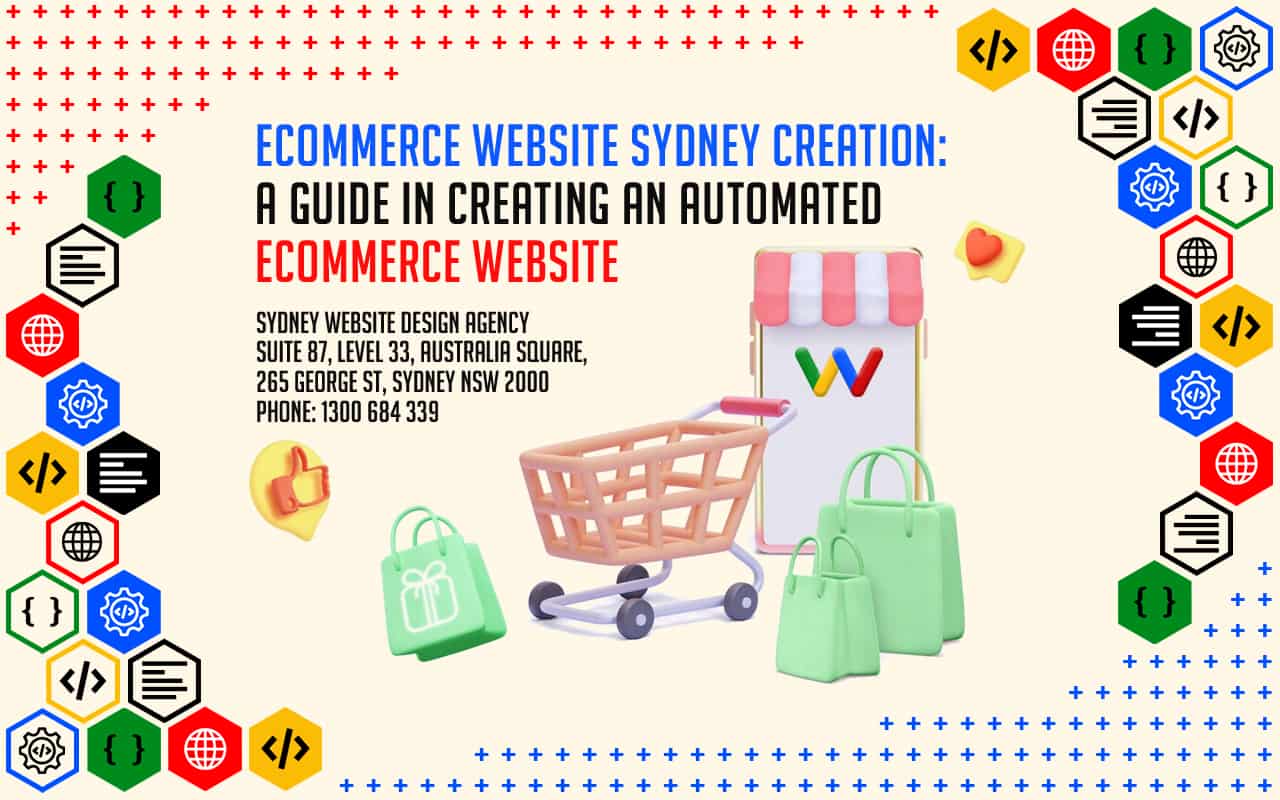Mastering Ecommerce: Your Ultimate Guide to Building a Successful Online Store
As the internet becomes increasingly ingrained in our lives, more and more people are turning to it for their shopping needs. This is unsurprising, as the internet offers a wealth of options and information, and buying products online is often more convenient than going to physical stores. In this blog post, we will discuss what eCommerce is and how to create an eCommerce website for your business.
This blog post will provide a comprehensive guide to creating an eCommerce website for your business. It will cover the basics of what you need to know before starting your own eCommerce website, including choosing a domain name and web host, setting up your shop, and marketing your business online.
Introduction
Many people think that the only reason to create an ecommerce website is to increase sales and revenue. While this is certainly a top benefit, there are many other reasons to establish an online presence for your business. There are many benefits of establishing an ecommerce presence for your business. Among the top three reasons include increased sales and revenues, lower costs, and greater customer reach.
Creating an ecommerce website is a great way to grow your business. Not only does it allow you to reach more customers, but it also makes it easier for customers to buy your products or services. In this guide, we’ll walk you through the process of creating an automated website for your business.
Selecting the right platform, choosing the correct tools and plugins, integrating your product and services are just the basics of how to create your eCommerce platform. For a more comprehensive guide on how you can create an automatic money making machine with your eCommerce website, continue reading this post.
Table of Contents
- What is an eCommerce Website
- What is eCommerce Web Development
- Selecting the Right eCommerce Platform
- Choosing the Right Tools and Plugins
- Integrating your Product and SEO
- Why You Need eCommerce Web Design Services
- Making Secure Online Payments Through Your Website
- eCommerce Website FAQs
- Creating an Automated Money Making Machine with Your eCommerce Website
What is an eCommerce Website

eCommerce websites, in contrast to a traditional website, allows consumers to purchase and sell tangible products, services, and digital items online rather than face-to-face. A company may use an e-commerce website to handle orders, take payments, manage shipping and logistics, and provide customer support.
Business deals take place in several forms: business-to-business (B2B), business-to-consumer (B2C), consumer-to-consumer, or consumer-to-business. Business transactions are conducted using the internet as a communications medium.
An e-commerce website provides a convenient way for businesses to take orders, accept payments, manage shipping and logistics, and provide customer service. With an eCommerce store, brick and mortar businesses can now expand their network of customers not only locally but as well as to its nearby towns and regions. Online sales for a former stand-alone store is now possible through eCommerce development.
E-commerce online stores have become a staple in our everyday lives. We use it to order food, clothes, and furniture; we rely on it to register for classes and other online services; we download books, music, and movies from e-commerce sites; and so much more. E-commerce is here to stay – it’s time to get on board.
If you’re considering starting an online business, or if you already have an online business but are looking to take it to the next level, then you need an eCommerce website. But where do you start? What defines eCommerce sites ideal for your business?
This guide will walk you through everything you need to know about creating an eCommerce website, from choosing the right platform to building your product catalogue to setting up shipping and payment options. By the end of this guide, you’ll be ready to launch your very own eCommerce site. But first, what are the different types of eCommerce websites are available out there?
Out of the three types of eCommerce website business models, which one do you need?– B2B, B2c, and C2C.
An e-commerce business model is a company’s strategy for generating income from the sale of items or services online. There are many options, but some typical e-commerce business models include selling items directly to customers, reselling goods, and providing digital services.
The key distinction between digital commerce and e-commerce is that digital commerce encompasses all electronic communications, like social media posts, text messages, emails, etc., whereas e-commerce only refers to transactions conducted on websites.
B2B eCommerce Websites
B2B is an abbreviation for business-to-business. This type of eCommerce website sells products and services to other businesses. The customers of a B2B eCommerce site are usually other companies that use the products or services to run their businesses.
Some common examples of B2B eCommerce sites include Alibaba, IndiaMART, and ThomasNet. These sites offer a wide range of products and services, from raw materials to finished goods to business services. They also offer convenient features like online ordering and payment processing. Compared to most online store and platforms, these types of eCommerce business cater more to wholesale offerings rather than retail. Digital marketing specialists and design agency offering their services to companies who require digital marketing services is an example of B2B eCommerce platforms.
B2C eCommerce Websites
B2C is an abbreviation for business-to-consumer. This type of eCommerce website sells products and services to individual consumers. The retailer typically manufactures or acquires the product they are selling and handles all aspects of the sale, from order taking to shipping, to customer service.
Some of the most popular B2C eCommerce websites include Amazon, Walmart, and Target. These sites offer a wide range of products, from books and electronics to clothes and home goods. They also offer convenient shopping features like one-click ordering and free shipping on large items. What’s advantageous for this type of eCommerce website is that they can cater custom eCommerce design, of course with professional help for web development.
C2B eCommerce Websites
C2B is an abbreviation for consumer-to-business. This type of eCommerce website allows individual consumers to sell products or services to businesses. The customers of a C2B eCommerce site are businesses that need the product or service offered by the consumer. Third-party integrations can be accommodated by such eCommerce stores.
One of the most popular C2B eCommerce sites is Fiverr. This site allows freelancers to sell their services, like web designers, graphic design, development services, and writing, to businesses that require them. Fiverr also offers convenient features like online ordering and payment processing. This type of business website is the best eCommerce solutions for those looking to host talents that are looking to serve business requirements based on the skills that they can offer. Upwork is another type of eCommerce site that functions under this concept.
C2C eCommerce Websites
C2C is an abbreviation for consumer-to-consumer. This type of eCommerce website allows individual consumers to sell products or services to other consumers. The customers of a C2C e Commerce site are other individuals who require the product or service being offered by the consumer.
The most popular C2C eCommerce site is eBay. This site allows individuals to sell a wide range of products, from clothes and electronics to collectables and art. eBay also offers convenient features like online bidding and payment processing.
Now that you know the different types of eCommerce websites, you can start planning your own eCommerce website. Remember to choose a business model that will best fit your products or services. And don’t forget to add convenient features like online ordering and payment processing to make your site easy to use.
What is eCommerce Web Development

eCommerce web development is the process of creating an online store for your business. This can be done by using a variety of different platforms, such as WordPress, Shopify, or Magento.
There are many benefits to having an eCommerce website, including the ability to reach a wider audience, increased sales, and automated processes.
Creating an eCommerce website can seem like a daunting task, but with the right platform and some planning, it can be easily accomplished. In this guide, we will cover everything you need to know to create an automated eCommerce website for your business.
Ecommerce websites provide several competitive advantages over traditional brick-and-mortar businesses, including:
- Reaching new local and international markets
- Attracting more potential clients and increasing sales volume with a professional online store that is available 24/7
- Reducing operational and marketing costs required to run and promote a physical store
- Tracking and analysing consumer behaviour to customise products and marketing campaigns
- Generating more upselling and cross-selling opportunities with remarketing campaigns
There are countless business opportunities generated daily when you have a professional online store that is customised to suit your specific business needs and goals. Having an eCommerce website development can help you tap into these possibilities.
eCommerce website design Sydney makes it possible to help many business owners, both small businesses and leading brands, create custom design online stores that connect and engages well to their audiences.
Selecting the Right eCommerce Platform

Creating an eCommerce website is a great way to reach new customers and sell more products or services. But before you start building your site, you need to select the right platform. There are many options available, but not all platforms are created equal. However, the right eCommerce website design can be the success or the downfall of a business.
To help you pick the best platform for your eCommerce website, we’ve created a list of the top 10 platforms. We considered factors like ease of use, features, scalability, and price. And we’ve included both paid and free options, so you can decide on the best platform for your needs.
1. Shopify
Shopify is one of the most popular eCommerce platforms on the market. It’s easy to use, has tons of free and paid features, and is scalable to grow with your business. Plus, it integrates with a wide range of payment processors, making it easy to accept payments on your site. This type of website promotes the sell online of products.
2. BigCommerce
BigCommerce makes it simple for anyone to construct and manage their e-commerce store, whether they have extensive technical knowledge or not. With top-tier tech support always available, BigCommerce takes care of its users from the first step until long after their storefront is up and running.
3. WooCommerce
WooCommerce is a WordPress-based ecommerce solution that enables you to run an online store. WooCommerce allows you to turn your WordPress site into an internet store, where you may sell items. Both are completely free and simple to use.
4. Magento
Magento is a well-known eCommerce platform that has all the functionality you’ll need to create a successful online store. It’s also scalable, so you can expand your business and link it with a variety of payment processors, making it simple to take payments on your site.
5. PrestaShop
PrestaShop is the perfect eCommerce platform for anyone looking to build a successful online store. With PrestaShop, you get all the features you need to create a professional website, plus integration with a wide range of payment processors, so you can accept payments easily.
6. OpenCart
OpenCart is an open source e-commerce platform that’s free to use. OpenCart offers a professional and dependable foundation on which to establish a successful internet business.
This framework attracts a broad range of users, ranging from seasoned web developers seeking for a user-friendly interface to small businesses just starting online operations for the first time. There are several features available in OpenCart that allow you to fully customise your store. With OpenCart’s strong tools, you may help your online business reach its full potential.
7. osCommerce
osCommerce is an e-commerce platform. It may be used on any web server that has PHP and MySQL installed, although it was primarily designed for use with Drupal. It’s free software, under the GNU General Public License.
8. ZenCart
Zen Cart is apparently the finest online store management system. This is a fantastic shopping cart since it provides various features such as different payment choices, multiple shipping alternatives, and more. The nicest part of this ecommerce solution is that it may be quickly added to any website.
9. Drupal Commerce
If you’re looking for eCommerce software that is both open-source and highly scalable, Drupal Commerce may be perfect for you. It can easily accommodate everything from a small product catalogue to a much larger eCommerce solution.
10. VirtueMart
VirtueMart is a Mambo-based or Joomla!-integrated open-source e-commerce platform that serves as an extension of the Mambo or Joomla! Content management systems (CMS). For storage, VirtueMart is written in PHP and requires MySQL as a backend database. It’s best for low to medium traffic websites with little to moderate traffic.
Now that you know the top eCommerce platforms in the market, it’s time to choose the best one for your business. Consider your needs and budget, then select the platform that’s right for you. And don’t forget to add convenient features like online ordering and payment processing to make your site easy to use.
Top eCommerce platforms in Australia
Recently, there has been a huge boom in the eCommerce industry in Australia. This is because more and more businesses are understanding the potential of selling online and are looking for ways to tap into this ever-growing market.
One of the best ways to sell online is to create an eCommerce website. An eCommerce website allows you to showcase your products or services to a wider audience and makes it easy for customers to purchase from you.
There are many different platforms that you can use to create an eCommerce website, but not all of them are created equal. To help you choose the best platform for your business, we’ve compiled a list of the top eCommerce platforms in Australia.
eBay Australia
eBay is one of the most popular eCommerce platforms in Australia, and for good reason. It’s easy to use, has a huge customer base, and offers a wide range of features to help you grow your business. Rather than building websites, one can easily host their products and sell it via this platform.
Gumtree Australia
Gumtree is another popular eCommerce platform in Australia. It’s a great option for businesses that are selling physical goods as it has a built-in classifieds’ system.
Amazon Australia
Amazon is the world’s largest eCommerce platform, and it recently launched in Australia. It’s a great option for businesses that are looking to tap into a global market.
Choosing the Right Tools and Plugins

Search engine optimisation is an easy lift for ecommerce websites. Although SEO has a very high ROI, many online stores don’t consider search engines at all when they’re putting their website together.
Many companies rely on social media marketing or paid advertising instead, which can work well but require a lot of ongoing effort and expense. Advertising spending amount to billions of dollars every year — and that cost is only going up.
If you want your ecommerce business to succeed, it’s important to understand SEO best practices. Here are some tips on how to make your ecommerce website more search engine friendly.
Choose the Right Domain Name
As you probably know, your domain name is one of the most important aspects of your website. It’s the first thing that people will see, and it will be a part of every single URL on your site. That’s why you want to choose a domain name that’s easy to remember and relevant to your business.
If you’re just starting out, it might be tempting to choose a domain name that’s keyword rich. For example, if you’re selling shoes, you might be tempted to go with something like bestshoesforyou.com or shoeforsale.com. However, this isn’t the best idea by itself.
First, keyword rich domain names doesn’t help by itself, but Google has changed its algorithms, and now these types of domains are actually need SEO.
It’s much better to choose a short, catchy domain name that’s easy to remember. For example, Nike’s domain name is just nike.com. You don’t need to include keywords in your domain name for it to be effective.
Make Your Site Mobile Friendly
One of the best things you can do for your ecommerce website is to make it mobile friendly. In other words, make sure it looks good and works well on mobile devices.
This is important for two reasons. First, more and more people are using their phones and tablets to shop online. In fact, over 50% of all ecommerce traffic now comes from mobile devices.
Second, Google now prefers websites that are mobile friendly. This means that if your website isn’t optimised for mobile, it will be much harder to rank in the search results.
Fortunately, making your site mobile friendly is relatively easy. You can either use a responsive theme or a separate mobile theme. If you’re not sure how to do this, your web developer should be able to help you out.
Use Product Schema Markup
Product schema markup is code that you can add to your website to give search engines more information about your products. This markup tells search engines things like the name of your product, the price, the availability, and other important details.
Adding product schema markup to your site can help you rank higher in the search results, especially for product-related searches. It can also help you get rich snippets, which are special search results that include extra information about your products.
If you’re not sure how to add schema markup to your site, you can use a tool like SchemaApp to generate the code for you. Then, all you need to do is add it to your website.
Optimise Your Product Pages
Your product pages are some of the most important pages on your website, so it’s important to optimise them for the search engines. Here are a few things you can do:
- Use keyword-rich titles and descriptions
- Include high-quality images
- Use product schema markup
- Add customer reviews
By optimising your product pages, you’ll be able to rank higher in the search results and get more traffic to your site.
Use Internal Links
Internal links are links that go from one page on your website to another page on your website. They’re different from external links, which are links from other websites to yours.
Internal links are important for two reasons. First, they help search engines crawl and index your website. Second, they help distribute link equity, which is a ranking factor, throughout your site.
To make sure you’re using internal links properly, add them to every page on your website. For example, if you have a product page, link to it from your home page and other relevant pages on your site.
If you want to get really fancy, you can use a plugin like Yoast SEO to automatically add internal links to your site.
Submit Your Site to Google Search Console
Google Search Console is a free tool that allows you to submit your website to Google and track its performance in the search results. It’s a good idea to submit your site as soon as it’s live, so you can start tracking its progress.
Creating an ecommerce website can be a daunting task, but it’s definitely doable if you follow the steps in this guide. By taking the time to create a well-optimised website, you’ll be able to get more traffic and make more sales.
Integrating your Product and SEO

Search engine optimisation is an easy lift for ecommerce websites. Although SEO has a very high ROI, many online stores don’t consider search engines at all when they’re putting their website together.
Many companies rely on social media marketing or paid advertising instead, which can work well but require a lot of ongoing effort and expense. Advertising spending amount to billions of dollars every year — and that cost is only going up.
If you want your ecommerce business to succeed, it’s important to understand SEO best practices. Here are some tips on how to make your ecommerce website more search engine friendly.
Choose the Right Domain Name
As you probably know, your domain name is one of the most important aspects of your website. It’s the first thing that people will see, and it will be a part of every single URL on your site. That’s why you want to choose a domain name that’s easy to remember and relevant to your business.
If you’re just starting out, it might be tempting to choose a domain name that’s keyword rich. For example, if you’re selling shoes, you might be tempted to go with something like bestshoesforyou.com or shoeforsale.com. However, this isn’t the best idea by itself.
First, keyword rich domain names doesn’t help by itself, but Google has changed its algorithms, and now these types of domains are actually need SEO.
It’s much better to choose a short, catchy domain name that’s easy to remember. For example, Nike’s domain name is just nike.com. You don’t need to include keywords in your domain name for it to be effective.
Make Your Site Mobile Friendly
One of the best things you can do for your ecommerce website is to make it mobile friendly. In other words, make sure it looks good and works well on mobile devices.
This is important for two reasons. First, more and more people are using their phones and tablets to shop online. In fact, over 50% of all ecommerce traffic now comes from mobile devices.
Second, Google now prefers websites that are mobile friendly. This means that if your website isn’t optimised for mobile, it will be much harder to rank in the search results.
Fortunately, making your site mobile friendly is relatively easy. You can either use a responsive theme or a separate mobile theme. If you’re not sure how to do this, your web developer should be able to help you out.
Use Product Schema Markup
Product schema markup is code that you can add to your website to give search engines more information about your products. This markup tells search engines things like the name of your product, the price, the availability, and other important details.
Adding product schema markup to your site can help you rank higher in the search results, especially for product-related searches. It can also help you get rich snippets, which are special search results that include extra information about your products.
If you’re not sure how to add schema markup to your site, you can use a tool like SchemaApp to generate the code for you. Then, all you need to do is add it to your website.
Optimise Your Product Pages
Your product pages are some of the most important pages on your website, so it’s important to optimise them for the search engines. Here are a few things you can do:
- Use keyword-rich titles and descriptions
- Include high-quality images
- Use product schema markup
- Add customer reviews
By optimising your product pages, you’ll be able to rank higher in the search results and get more traffic to your site.
Use Internal Links
Internal links are links that go from one page on your website to another page on your website. They’re different from external links, which are links from other websites to yours.
Internal links are important for two reasons. First, they help search engines crawl and index your website. Second, they help distribute link equity, which is a ranking factor, throughout your site.
To make sure you’re using internal links properly, add them to every page on your website. For example, if you have a product page, link to it from your home page and other relevant pages on your site.
If you want to get really fancy, you can use a plugin like Yoast SEO to automatically add internal links to your site.
Submit Your Site to Google Search Console
Google Search Console is a free tool that allows you to submit your website to Google and track its performance in the search results. It’s a good idea to submit your site as soon as it’s live, so you can start tracking its progress.
Creating an ecommerce website can be a daunting task, but it’s definitely doable if you follow the steps in this guide. By taking the time to create a well-optimised website, you’ll be able to get more traffic and make more sales.
Why You Need eCommerce Web Design Services

Ecommerce website design is a significant element when it comes to websites, and even more so for eCommerce websites. A successful eCommerce web design may assist customers in having a superior experience while also increasing sales.
The first impression is a key factor in catching and engaging your audiences. If you fail to do so on the next 5 seconds of your landing pages, then there goes your bounce rate. If you are investing in Google ads, you’ll just waste your resources if your website fails to deliver.
If you walked into a business in real life and saw a filthy, disorganised floor, you would most likely have an unfavourable opinion and leave. This is similar to an online store. Imagine if you came upon a website with a messy layout and low-resolution photos or mismatched typefaces; what would your reaction be? Most likely, you would choose to leave and find another online store that is better designed.
Examine Other Business Websites
Keep this in mind as you create. Examine other businesses to see how they arrange things out. Make sure everything is neat and professional looking. Use high-resolution photos to ensure that everything looks similar and that nothing appears jarring or unbalanced.
Design with Users in Mind
Your eCommerce website should be designed with the user in mind. The user experience is everything when it comes to online shopping. If a potential customer has a difficult time navigating your website or understanding your product, they are likely to leave and never come back.
Keep It Simple
Make sure your website is easy to use and understand. Use clear and concise language, and avoid using jargon. Organise your products in an easily navigable way, and make sure the checkout process is simple and straightforward.
In addition to being user-friendly, your eCommerce website must also be visually appealing. Use high-quality images and videos to showcase your products, and make sure your website layout is attractive and inviting.
Your eCommerce website should also be designed to be responsive. This means that it should look great on all devices, from desktop computers to smartphones. Make sure your website loads quickly and is easy to navigate on all platforms.
Last but not least, your eCommerce website should be designed with SEO in mind. Use keyword-rich titles and descriptions, and make sure your website appears in search engine results pages. By following these tips, you can ensure that your eCommerce website is successful.
Making Secure Online Payments Through Your Website

As an eCommerce business, it is essential to ensure that your website is able to provide secure online payments for your customers. There are a few things that you can do to make sure that your payments are secure:
1. Use a reputable payment processor.
There are many different payment processors out there, so it is important to choose one that is reputable and has a good reputation for security. Some of the more popular payment processors include PayPal, , and Stripe.
2. Use SSL encryption on your website.
SSL encryption is a type of security that helps to protect information that is being sent over the internet. This means that if someone were to try and intercept the data being sent, they would not be able to read it. In order to add SSL encryption to your website, you will need to purchase an SSL certificate from a reputable company.
3. Keep your software up to date.
One of the best ways to ensure that your website is secure is to keep your software up to date. This includes things like your CMS, shopping cart software, and payment processor. By keeping these things up to date, you can help to prevent vulnerabilities that could be exploited by hackers.
4. Use strong passwords.
Another important security measure is to use strong passwords for all of your accounts. This includes your email account, social media accounts, and any other online accounts that you have. Strong passwords are ones that are difficult to guess and contain a mixture of upper and lowercase letters, numbers, and symbols.
5. Use two-factor authentication.
Two-factor authentication is an additional layer of security that can be added to your website. This works by requiring two pieces of information to log in. The first piece of information is something that only you know, such as a password. The second piece of information is something that is only known by the person who set up the account, such as a code that is sent to your phone or email address.
By following these tips, you can help to ensure that your website is secure and able to provide secure online payments for your customers.
eCommerce Website FAQs
What is the importance of a custom ecommerce website for online businesses?
How does ecommerce website design impact online sales?
Why should I choose tailored ecommerce over a generic e commerce website?
What are some key features to include in an ecommerce website?
How does the development process work for a custom ecommerce website?
Why is ecommerce website design Sydney a good option for online businesses?
How can digital marketing enhance my ecommerce journey?
In conclusion, investing in a custom ecommerce website with tailored ecommerce solutions is key to succeeding in the competitive world of online shopping. Whether you’re working with a team specialising in ecommerce website design Sydney or focusing on a global market, the right ecommerce strategy and digital marketing efforts will set your online store apart and drive continued growth.
Creating an Automated Money Making Machine with Your eCommerce Website

Creating an eCommerce website is a great way to grow your business. Not only does it allow you to reach more customers, but it also makes it easier for customers to buy your products or services. In this guide, we walked you through the process of creating an automated website for your business.
While there are many benefits to establishing an online presence, the top three reasons include increased sales and revenue, lower costs, and greater customer reach. By creating an eCommerce website, you can make money while making your business more efficient and accessible to customers around the world.



















































